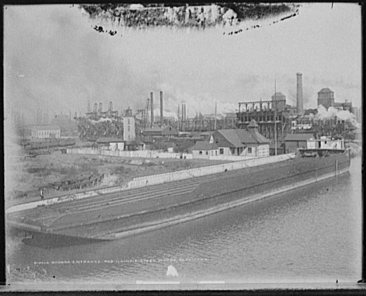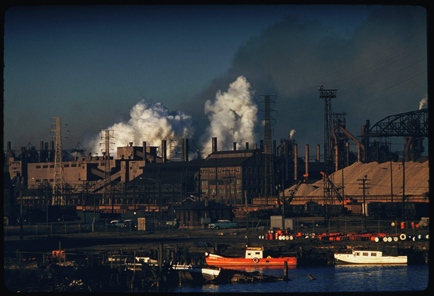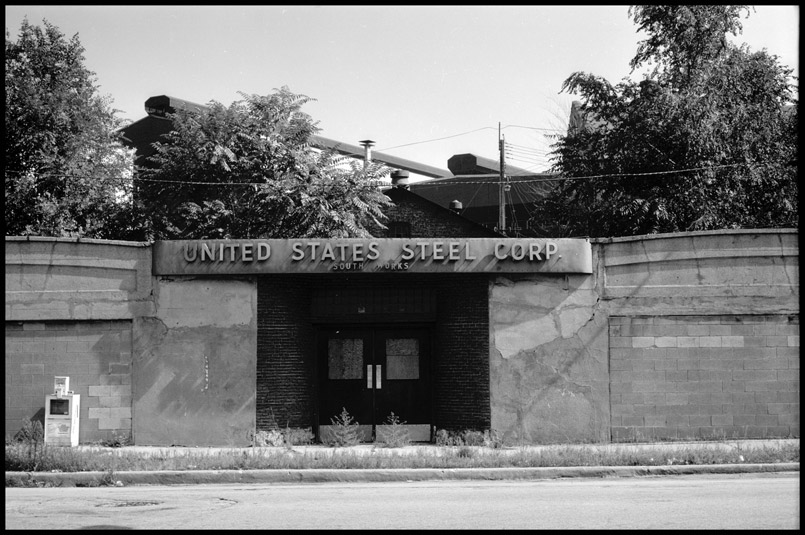Along Lake Michigan on the Southeast Side of Chicago lies a huge empty tract of land. Probably the largest vacant parcel of land in the city, it was formerly home to the U. S. Steel South Works, the largest integrated steelmaking operation in Chicago. Almost 20,000 people were once employed where empty fields of concrete and rubble now sit.
Probably the largest vacant parcel of land in the city, it was formerly home to the U. S. Steel South Works, the largest integrated steelmaking operation in Chicago. Almost 20,000 people were once employed where empty fields of concrete and rubble now sit.
The story of the South Works reads as a microcosm of the rust belt. First opened in 1882 as the North Chicago Railway Mill Company, the mill went through several name changes before becoming the U.S. Steel South Works. The placement of the steel mill at the mouth of the Calumet River at Lake Michigan made for easy transport of goods and raw materials. The neighborhood that developed around the mill, South Chicago, was filled with immigrants of all types who came to the area for the well-paying jobs at the mill. However, the prosperity did not last forever, and due mainly to market forces affecting the entire United States steel industry, the South Works began a long period of downsizing beginning in the 1970s. Finally, on April 10, 1992, the doors closed for good. The mill that once produced steel beams for most of Chicago’s skyscrapers and jobs for thousands of area residents was now gone, and with it went the prosperity of South Chicago. With each round of job cuts at the mill, the neighborhood had become more and more economically depressed. Once the South Works closed, South Chicago spiraled into major decay, a trend that has yet to be reversed.


Left: Pullman State Historic Site. Right: Alex MacLean, UIC Imagebase.

 Left: Library of Congress Prints and Photographs Division, LC-D4-10460 L, 1890-1901. Right: Charles Cushman, Indiana University Archives, 1958.
Left: Library of Congress Prints and Photographs Division, LC-D4-10460 L, 1890-1901. Right: Charles Cushman, Indiana University Archives, 1958.
Much speculation has been put into what to do with the site since its closure almost 15 years ago. Plans have come and gone, but the basic idea remains, a mixture of industrial, commercial and residential with new parkland along the lakefront. Solo Cup, Co. had plans to build a large factory on a portion of the site but recently pulled out and is trying to find someone else to develop their portion of the land. In 2004, a large project commenced to provide topsoil for the lakefront park using dried mud from the bottom of Lake Peoria in Downstate Illinois. Also, new roads were built for the relocation of U.S. Route 41, which will eventually be routed through the site. Development on the South Works site has generally been slow in coming, however, and it will likely be a long time before the site is completely redeveloped.



DePaul Univ. Archives, Chicago IL, Lincoln Park Conservation Assoc. Collection.
- Chaddick Institute Webinar on Thursday, January 28, 2021: Revitalizing Chicago’s South Loop
- The Northern Indian Boundary Line
- B&O’s Original Chicago Entry
- Pony Express
- South Western Avenue Improvement



